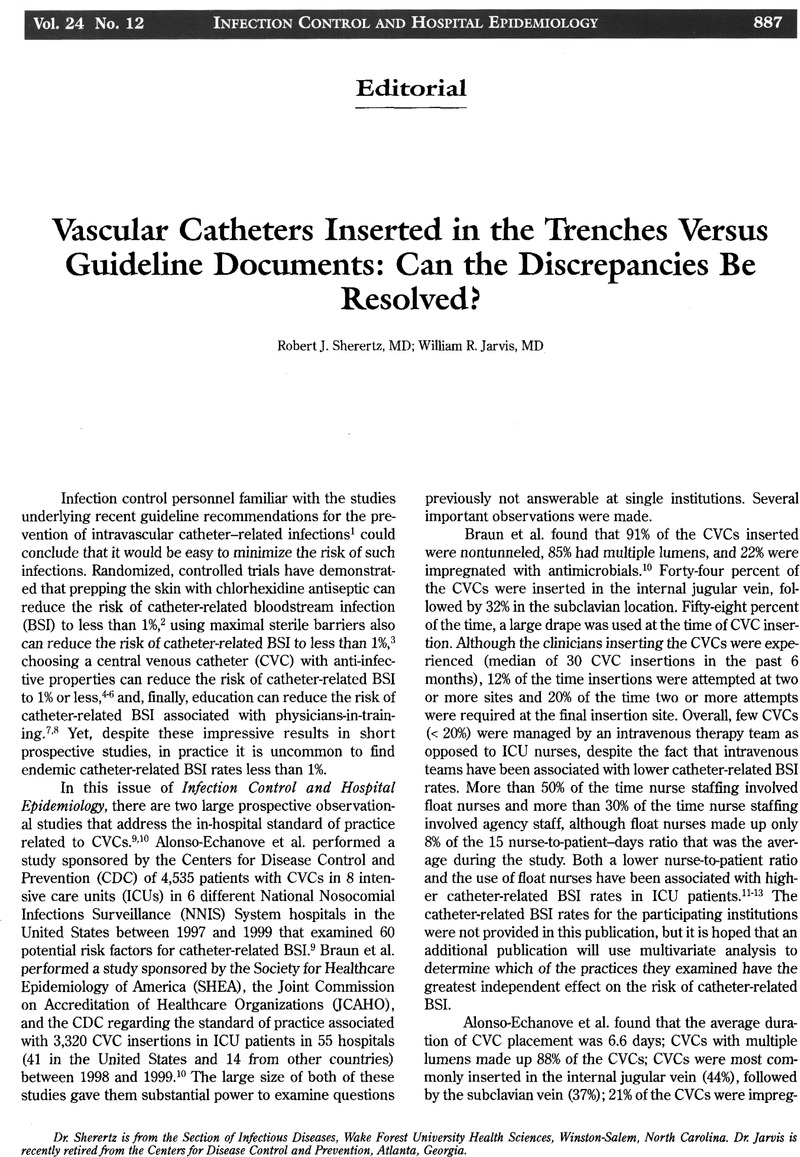Crossref Citations
This article has been cited by the following publications. This list is generated based on data provided by Crossref.
Rizzo, Michael
2005.
Striving to eliminate catheter-related bloodstream infections: A literature review of evidence-based strategies.
Seminars in Anesthesia, Perioperative Medicine and Pain,
Vol. 24,
Issue. 4,
p.
214.
Chwals, Walter J.
2006.
Vascular Access for Home Intravenous Therapy in Children.
Journal of Parenteral and Enteral Nutrition,
Vol. 30,
Issue. 1S,
BEEKMANN, SUSAN E.
and
HENDERSON, DAVID K.
2010.
Mandell, Douglas, and Bennett's Principles and Practice of Infectious Diseases.
p.
3697.
Beekmann, Susan E.
and
Henderson, David K.
2015.
Mandell, Douglas, and Bennett's Principles and Practice of Infectious Diseases.
p.
3310.



